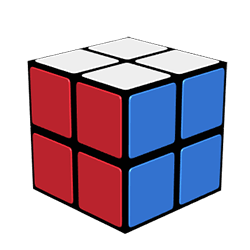1000x1000x1000 Rubik S Cube Software


The main difference between the program and the real Rubik's Cube is that you. Or 12x12x12 or 20x20x20. Or even 200x200x200., 1000x1000x1000 etc. Grubiks; Puzzles. Megaminx Pyraminx Mini Pyraminx Master Pyraminx Professor Pyraminx Rubik's Cube Mini Cube Rubik's Revenge Professor's Cube.
Rubik's Cube Other names Magic Cube, Speed Cube, Puzzle Cube Type Inventor(s) Company Rubik's Brand Ltd Country Hungary Availability 1977: as Hungarian Magic Cube, first test batches released in Budapest 1980: as Rubik's Cube, worldwide–present Rubik's Cube is a invented in 1974 by Hungarian sculptor and professor of architecture. Originally called the Magic Cube, the puzzle was licensed by Rubik to be sold by in 1980 via businessman Tibor Laczi and Seven Towns founder, and won the special award for Best Puzzle that year. As of January 2009, 350 million cubes had been sold worldwide making it the world's top-selling puzzle game. It is widely considered to be the world's best-selling toy.
Klyuch dlya programmi shef ekspert. At Szczakowa district. In the middle of the nineteenth century the authorities of Rzplita Krakowska planned to build a railway line towards Silesia. Goulbornemwoh noreply@blogger.com Blogger 387 1 25 tag:blogger.com,1999:blog-422794347.post.
On the original classic Rubik's Cube, each of the six faces was covered by nine stickers, each of one of six solid colours: white, red, blue, orange, green, and yellow. The current version of the cube has been updated to coloured plastic panels instead, which prevents peeling and fading. In currently sold models, white is opposite yellow, blue is opposite green, and orange is opposite red, and the red, white and blue are arranged in that order in a clockwise arrangement. On early cubes, the position of the colours varied from cube to cube.
An internal pivot mechanism enables each face to turn independently, thus mixing up the colours. For the puzzle to be solved, each face must be returned to have only one colour.
Similar puzzles have now been produced with various numbers of sides, dimensions, and stickers, not all of them by Rubik. Although the Rubik's Cube reached its height of mainstream popularity in the 1980s, it is still widely known and used. Many continue to practice it and similar puzzles; they also compete for the fastest times in various categories. Since 2003, the, the Rubik's Cube's international governing body, has organised competitions worldwide and recognise world records. Diagram from Nichols' patent showing a cube held together with magnets In March 1970, invented a 2×2×2 'Puzzle with Pieces Rotatable in Groups' and filed a Canadian patent application for it. Nichols's cube was held together by magnets.
Nichols was granted on 11 April 1972, two years before Rubik invented his Cube. On 9 April 1970, Frank Fox applied to patent an 'amusement device', a type of on a spherical surface with 'at least two 3×3 arrays' intended to be used for the game of.